DEPARTMENT OF INTEGRATIVE PHYSIOLOGY
We mainly investigate human brain functions non-invasively using magnetoencephalography (MEG) and electroencephalo-graphy (EEG). The following investigations are in progress at present.
- Sensory system: By recording the magnetic responses to visual, auditory and somatosensory stimuli, the organization of sensory processing in the human brain is being investigated. Particularly, our interest focused on under-lying mechanisms of somatosensory and pain perception.
- Motor system: Cerebral cortical activities related to voluntary movement are being investigated with the performance of various kinds of motor tasks such as finger movement and vocalization. We also study motor evoked potentials following magnetic stimulation applied to the scalp.
- Even-related brain responses: By using a various kinds of psychophysical tasks or paradigms, we investigated the cognitive processing of the brain (higher brain functions) related mainly to language and visual perception such as face. Underlying mechanism of perceptive process of an apparent motion is one of major topics.
- Micro-SQUID: We recently started to use very small SQUID (superconducting quantum interference device) system termed "micro-SQUID". We expect that the micro-SQUID is very useful to investigate brain functions in animals such as monkeys and cats.
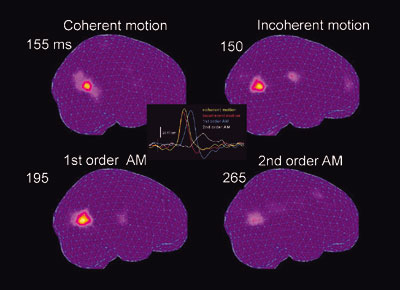
MEG responses following various kinds of visual motion stimulation
Activated regions estimated by minimum current estimate. Peak latencies of responses are different depending on stimulation, for example 155 msec following coherent motion, activated regions are almost consistent, around human homologue MT/V5+ region.
AM: Apparent motion
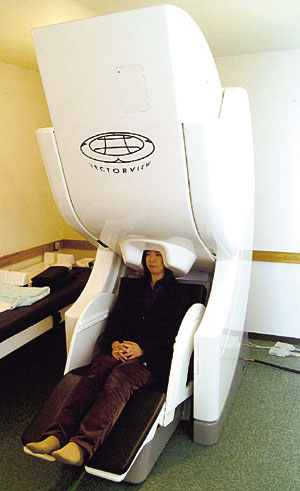
306-channel helmet-shaped MEG recording system (ELEKTA-Neuromag, Finland)
Staff
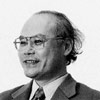 |
Professor:
KAKIGI, Ryusuke, MD, PhD
1978 Graduated from Kyusyu University, Faculty of Medicine. 1981 Clinical Associate, Department of Internal Medicine, Saga Medical School. 1983-1985 Research Fellow, The National Hospital for Nervous Diseases, University of London. 1992 Assistant Professor, Department of Internal Medicine Saga Medical School. 1993 Professor, NIPS.
Speciality: Neurophysiology |
 |
Associate Professor:
KANEOKE, Yoshiki, MD, PhD
1984 Graduated from Nagoya University, Faculty of Medicine. 1992 Completed the doctoral course in Neurology, Nagoya University, 1992-1995 Research Fellow & Assistant Professor, Department of Neurology, Emory University, U.S.A. 1995 Associate Professor, NIPS.
Speciality: Neurology, Neurophysiology |
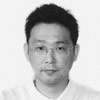 |
Assistant Professor
INUI, Koji, MD, PhD
1989 Graduated from Saga Medical School, Faculty of Medicine. 1994 Completed the doctoral course in Psychiatry, Mie University. 1994 Assistant Professor, Department of Psychiatry, Mie Univertsity. 2000 Research fellow, 2001 Research Associate, NIPS.
Speciality: Neurophysiology, Psychiatry |
 |
Assistant Professor:
WATANABE, Shoko, MD, PhD
1992 Graduated from Saga Medical School. 1999 Completed the doctoral course in Life Science, the Graduate University for Advanced Studies. 1999 Research Associate, NIPS.
Speciality: Neurophysiology, Neurology |
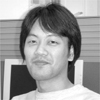 |
Research Fellow:
KIDA, Tetsuo, PhD
2000 Graduated from School of Health and Physical Education, University of Tsukuba, 2004 Completed the doctoral course in Health and Sports Sciences, University of Tsukuba, 2005 Research Fellow, NIPS
Speciality: Exercise Physiology, Neurophysiology |
 |
JSF Research Fellow:
MIKI, Kensaku, MD, PhD
2000 Graduated form Hamamatsu University School of Medicine, 2004 Completed doctoral course in Life Science, the Graduate University of Advanced Studies. 2004 JSPS Research Fellow. 2004 JSF Research Fellow.
Speciality: Neurophysiology |
 |
JSF Research Fellow:
WASAKA, Toshiaki, PhD
1997 Graduated from Faculty of Integrated Arts and Sciences, The University of Tokushima, 1999 Graduated from Master course in Human and Natural Environment Sciences, The University of Tokushima, 2004 Graduated from Doctoral course in Health and Sports Sciences, University of Tsukuba, 2004 Research Fellow, NIPS.
Speciality: Exercise physiology, Neurophysilogy |
 |
JSPS Postdoctoral Fellow:
WANG Xiaohong, MD, PhD
1993 Graduated from China Medical Univeristy, 2000 Graduated from Master Course in Neurology, China Medical Univerisity, 2004 Completed the doctoral course in Life Science, the Graduate University for Advanced Studies.2004 Research Fellow, NIPS. 2004 JSPS Postdoctoral Fellow.
Speciality: Neurology, Neurophysilogy |
Living animals, including human beings, get many pieces of information from the external and internal environments, integrate them to make decision for appropriate behavioral activity, and finally take action based on self-intension. The major goal of our research programs is to elucidate the mechanisms underlying higher motor functions involving the cerebral cortex, basal ganglia and cerebellum.
By employing a wide range of neurophysiological and neuroanatomical techniques, we aim to explore such intricate brain functions. The current topics under study are as follows: 1) Elucidation of information flows through the neuronal networks by electrophysiological and anatomical methods; 2) Monitoring of dynamic activities of the brain during voluntary movements
by electrophysiological recordings of neuronal activity; 3) Investigation of the functions of the certain areas of the brain by local injection of neuronal blockers.
We also put our efforts on the elucidation of the pathophysiology of movement disorders, such as Parkinson’s disease.
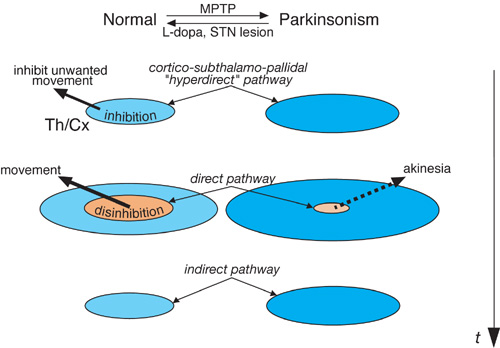
Dynamic model of basal ganglia function. The “hyperdirect,direct and indirect ” pathways dynamically control the activity of the thalamus and cerebral cortex (Th/Cx), and release only the selected motor program at the appropriate timing (left). In the parkinsonian state (right), reduced disinhibition in the thalamus and cortex through the "direct" pathway results in akinesia. After L-dopa application or STN lesion, inputs through the "direct" pathway can induce sufficient disinhibition to execute movements (left).
Staff
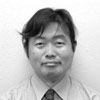 |
Professor:
NAMBU, Atsushi, MD, PhD
1982 Graduated from Kyoto University, Faculty of Medicine. 1985 Research Associate, Kyoto University, School of Medicine. 1989 Postdoctoral Fellow, New York University, Faculty of Medicine. 1991 Associate Professor, NIPS. 1995 Director, Tokyo Metropolitan Institute for Neuroscience. 2002 Professor, NIPS.
Speciality: Neurophysiology |
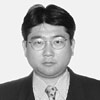 |
Assistant Professor:
HATANAKA, Nobuhiko, DDS
1996 Graduated from Ohu University, Faculty of Dentistry. 1996 Resident at Ohu University Hospital. 1997 Research Associate, Ohu University, Faculty of Dentistry. 1998 Research Fellow, Tokyo Metropolitan Institute for Neuroscience. 2003 Research Associate, NIPS.
Speciality: Neurophysiology, Neuroanatomy |
 |
Assistant Professor:
TACHIBANA, Yoshihisa, DDS, PhD
1999 Graduated from Osaka University, Faculty of Dentistry. 2003 Completed the doctoral course in Dental Sciences, Graduate School of Osaka University. 2003 Research Fellow, NIPS. 2003 Assistant Professor, NIPS.
Speciality: Neurophysiology |
Information-processing aspects of brain functions cannot be revealed simply by accumulating knowledge about brain loci or substances. Computational approaches are thus used to elucidate the mechanisms of how the brain works.
(1)The cerebellum was believed to be a neural organ for motor control.However, the recent studies have shown that it contributes to the cognitive functions specific to humans. Handling tools and reading people’s minds are one of these functions. We clarify the neural mechanisms behind the cognitive functions that include the cerebellum.
(2)Humans have a potential to adapt to different environments. They are proficient in controlling their movements and handling various tools. Our goal is to understand the learning and control mechanisms of our motor system and determine their neural substrates.
(3)Interpretation of massive neurobiological data requires solid computational frameworks. For neuroscience, we develop computational models and software tools for estimating signal sources from MEG data.
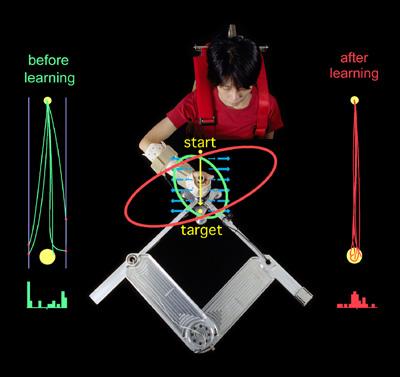
Stiffness elongated in an unstable direction
Staff
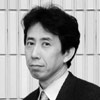 |
Professor:
KAWATO, Mitsuo, PhD
1976 Graduated from Tokyo University, Faculty of Science. 1981 Completed the doctoral course in Engineering Science, Graduate School of Engineering Science, Osaka University. 1981 Research Associate and then Lecturer, Osaka University. 1988 Senior Researcher, ATR Auditory and Visual Perception Research Labs. 2003 Director of ATR Computational Neuroscience Labs., 2004 ATR Fellow.
Specialty: Computational Neuroscience |
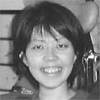 |
Associate Professor:
OSU, Rieko, PhD
1991 Graduated from Kyoto University, Faculty of Literature. 1997 Completed the doctoral course in Literature, Graduate School of Literature, Kyoto University. 1994 Intern student, ATR Human Information Processing Research Labs, 1996 Researcher, JST ERATO Project, 2003 Senior Researcher of ATR Computational Neuroscience Labs., 2004 Senior Research Scientist.
Specialty: Computational Neuroscience |
|
















